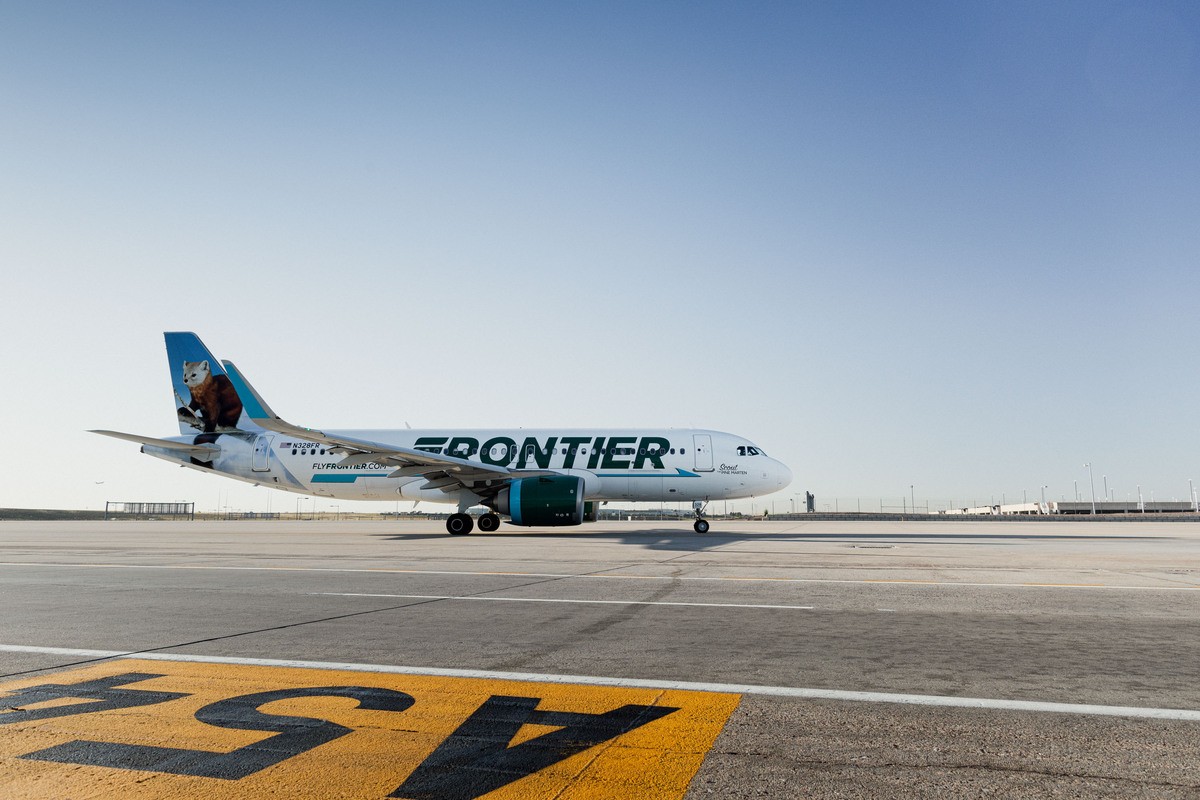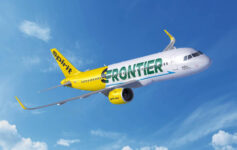
The good news is a woman who stopped breathing onboard a Frontier Airlines flight survived. The bad news is that treating her became more difficult and her chance of death more likely because Frontier Airlines did not properly stock its medical kit.
Medical Kit Missing Essential Items On Frontier Airlines
A woman stopped breathing on a Frontier Airlines flights from Phoenix (PHX) to Las Vegas (LAS) on March 21, 2022. Flight attendants called for help and a man from North Carolina named Seth Coley was the only one to step forward. He is a trained wilderness first responder.
The passenger onboard had a very weak pulse and was not breathing. Coley called for the medical kit, the first aid kit onboard, whose contents are regulated by the Federal Aviation Administration, and quickly looked for an oropharyngeal airway or a nasopharyngeal airway inside.
But there were none.
Coley was able to get the woman breathing again “by manipulating her neck and airway” but his job became more treacherous without either device.
After the flight he wrote to Frontier Airlines, hoping that he could ensure that their medical kits were reviewed and the budget airline would ensure that oropharyngeal airways were stocked on future flights.
Ne never heard back, so after several weeks he took to social media.
“Frontier Airlines I understand you’re a budget airline, but if you’re gonna continue operating in the United States. Please had the decency to have simple medical life-saving tools on board. That way when something happens, AND IT DOES, someone like me can do something about it. Rather than having to go to the news and explain why someone just died on your aircraft because of your lack of common sense.”
Frontier Airlines has yet to respond, but the FAA requires the following items in a plane’s medical it:

Notice the third item…
If an airline is cutting corners on its medical kit, it raises other questions about the safety of the airline.
CONCLUSION
A man who saved the life of another passenger onboard encountered difficulty when a critical item was missing from the plane’s emergency medical kit. I wonder how often these kits are audited or reviewed? Failing to stock a critical item does not inspire confidence in the airline itself.
image: Frontier Airlines




The way I understand it flight attendants check that an item like this is there, the proper number on board and they should have a seal or seals intact.
As to the contents, not certain if that is maintenance of some other department.
Well..someone may have used the kit and I do not think you can MEL a kit with missing contents. First Aid kits can be partial kits, but the Med kit must be sealed. This aircraft was flying around non-airworthy (most likely) and it was accidental im sure. this could be big trouble for the pilots who probably had no idea.
Realistically if it was missing, it falls on the crew which removed it from the SEALED med-kit previous to this incident. If it was actually installed in the kit to begin with. A med-kit is not an item that can have missing equipment and cannot be MEL’d. So if it were used, the flight crew either failed to write annotate it in the lognbook then, or if they did, then whomever supplied the sealed kit is in non compliance. I’m going to say it wasn’t any crewmember at fault and most likely is it was never in the kit to begin with, highly unlikely it was used on any previous flight. As far as your statement “non airworthy” this does not apply, this term refers to the mechanical condition of the aircraft itself. “Out of compliance” does apply and most likely they will be levied a fine and an answer as to how they will correct the situation. The airline should have reached out to the 1st responder on several levels, not only to acknowledge his concern but also keeping one of their paying customers alive. Definately warrants some compensation even a simple thank you. Kudos to him.
I was once on a flight with a medical issue. A nurse and two doctors responded. The nurse was very bossy, insisting that she could handle it and telling the doctors to go back to their seats. The FA concurred. One of the doctors told me that the nurse handled the situation poorly and did not fully evaluate the passenger. Instead, the nurse jumped into conclusions and did not evaluate for other plausible and deadly causes of fainting.
So dumb. Bullying. Some nurses are militant, I’m told, like AOC or MTG. (of course, not 100% of nurses)
It happens all the time, to the point that I (a trauma surgeon) don’t respond if a nurse is already there. I’m happy to help but I never agreed to engage in a yelling match, which is almost always what happens. The battle of wits is even worse for my female colleagues.
Also I’m surprised nasopharyngeal airways aren’t on the list. They are simple tools that can be life-saving for keeping a patient breathing.
How about if he or an advocacy group on his behalf files an official docketed DOT complaint, which of course is different, than an informal complaint anyone can easily file.
The charges in the complaint could not only reflect the missing medical kit items, but F9’s failure to respond. So kind of like if you get arrested and don’t show up at court, additional charges beyond what you were arrested for could be added.
You might even get in more trouble based on the ancillary charges that get filed, as opposed to a perhaps simple and easily resolved base or initial charge.
Also if he could get interviewed by say the Today Show, I think that would help.
Perhaps more concerning is that the FAA seems to think only one size of paediatric oro-pharyngeal airway will suffice when a range of 4 or 5 is usually required to cover the various ages and sizes of children. They are hard plastic devices and an inappropriately sized one can obstruct the upper airway and create more problems than it solves.
The list is laughable in its simplicity. Another highlight is only 2 doses of adrenaline in the concentration used for anaphylaxis. Repeated doses are often required, especially given the significant time required to descend and land. The recent case onboard an easyJet flight highlights this.
I think the issue is that it’s a small medical kit with basic tools to facilitate care for the majority of the most common medical emergencies. They’re not designed to provide everything needed for all patients under all circumstances.
You’re obviously correct that only one size of pediatric airway won’t cover all patients, but pediatric respiratory emergencies on-board aircraft are presumably quite rare, so it’s not necessarily “cost-efficient” from a regulatory perspective to require multiple sizes.
It’s not a required item….
Read the list above…it is required.
Speaking as a career paramedic, an OP airway helps, but it’s not absolutely crucial. The “head-tilt-chin-lift” technique taught in all basic CPR classes is adequate to open one’s airway.